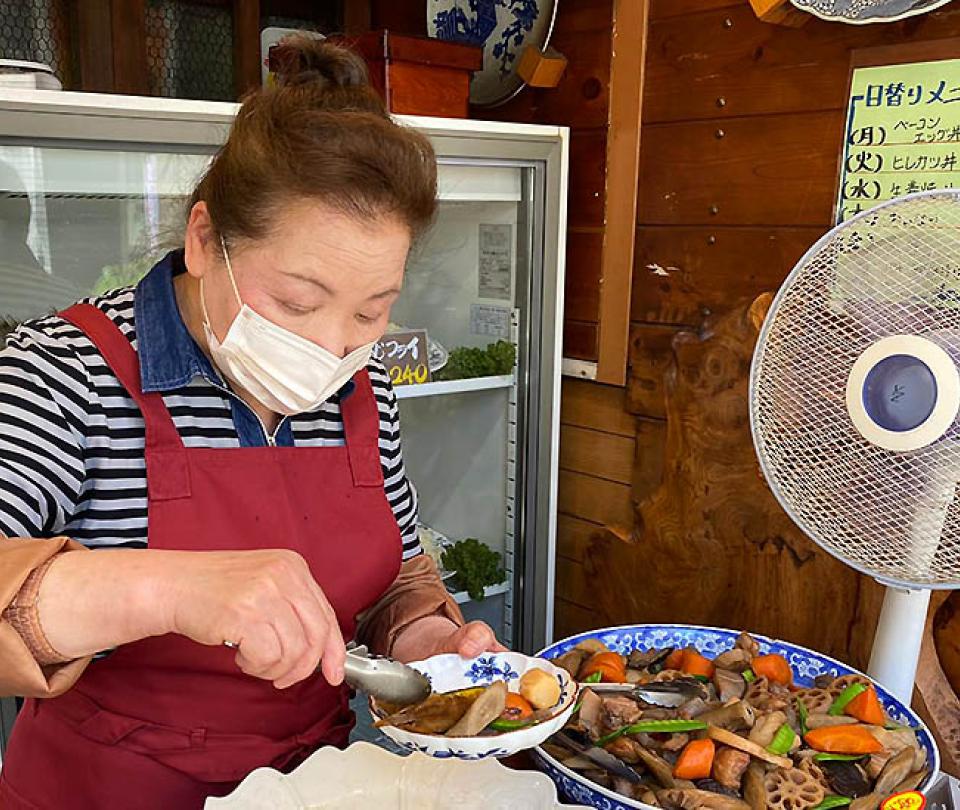As the United States has hiked interest rates this year to rein in soaring inflation, the world’s major central banks have embarked on a similar crusade. Except one: Japan.
Swimming against the tide, the world’s third largest economy has maintained an interest rate of -0.1%, although the country reached an inflationary level of 3%, the highest since 1991 (excluding the 2014 jump, when prices were seen affected by a sales tax increase).
In many countries around the world, 3% inflation would be minimal (just ask Argentina, which is currently dealing with an 83% cost-of-living increase).
But by Japanese standards, this is the highest inflation in decades.
At the same time, the Japanese currency, the yen, is in free fall.
Conventional economic prescriptions say that an increase in interest rates could alleviate both problems. However, many are not convinced that this is the solution for the Asian country.
With much of the current inflationary pressure coming from the strong dollar and rising energy and food imports, some economists believe that the Japanese authorities’ room for maneuver is, for now, quite limited.
And while a rate hike could partially help the country get closer to its 2% annual target, what’s not clear is that it will stop the yen’s slide.
In other countries, rate hikes by their central banks have done little to protect their own currencies against the mighty dollar, at this juncture.
Negative interest rates seek to reactivate the economy.
In practice, it means that the central bank of a country, which is the monetary authority, charges commercial banks for some of the reserves that they maintain in the institution.
Since it is more expensive for commercial banks to hold reserves, the measure is designed to encourage banks to use such reserves to lend to entrepreneurs in an effort to revive economic activity.
The Bank of Japan argues that making credit more expensive now would only suppress already weak demand and delay a fragile post-pandemic recovery.
Japan’s history has its own twists and turns that set it apart from the rest.
For years the country was mired in agonizing deflation (a general decline in prices) that contributed to economic stagnation.
Precisely what Japan needed was an increase in the cost of living to stimulate economic growth. However, analysts say, the inflation that exists today in Japan is not the reflection of a true recovery, but rather the result of the external crisis and the fall of the yen.
From this point of view, what Japan would need is “good inflation,” the kind created by strong consumer demand.
But the current one is a kind of “bad inflation,” experts say, the kind created by a strong dollar and product shortages related to the pandemic and the war in Ukraine.
The central bank considers that this increase in prices is temporary and therefore prefers to leave rates below zero.
That is why the highest monetary authority, Haruhiko Kuroda, has insisted that the economy is too weak to handle higher interest rates.
Traditionally, the yen has always been considered a refuge in times of storm and that is why every time there is a crisis, investors protect themselves by buying the Japanese currency.
But that status is now in question.
This year alone, the currency has lost a fifth of its value against the dollar, reaching its lowest price since 1990.
Why? The yen’s decline has been driven by the difference between interest rates in Japan and the US, explains BBC journalist Mariko Oi.
While the world’s largest economy has aggressively raised its interest rate to 3.25%, Japan has remained below zero.
Higher interest rates tend to make a currency more attractive to investors.
As a result, there is less demand for currencies from countries with lower rates and those currencies lose value.
Some experts believe the yen’s weakness also reflects the state of the country’s finances, with an economy that has barely grown in the past three decades.
To this we must add that Japan is the most indebted country in the world and that it carries a demographic time bomb due to the low birth rate.
The government has allowed some foreign workers to help address an aging population, but there is still strong opposition to immigration policies.
“There is no reason for the yen to strengthen,” Takeshi Fujimaki, a former adviser to billionaire investor George Soros, tells the BBC.
Japan had not intervened in the foreign exchange market to prop up the yen for almost two and a half decades.
However, last month, when the currency fell, the authorities stepped in and spent $21 billion. The move helped for a short while, but soon the currency fell again, this time crossing 150 yen to the dollar.
Some reports indicate that he had to intervene again, says Mariko Oi, although the Japanese government denies this.
In any case, local analysts believe that this type of intervention can only have punctual effects.
“It’s to show the position of the Japanese government that they don’t want the Japanese yen to weaken further,” says Eisuke Sakakibara, a former senior official at Japan’s Ministry of Finance.
Any country whose currency loses value faces adverse effects. The weak yen has made everything Japan buys abroad more expensive.
The country relies heavily on imported oil and gas. Due to exchange rates and rising energy prices, the amount of money you spent on imports last month increased by 46%.
But on the plus side, the money Japanese exporters earn abroad is worth much more at home. Since exports account for about 15% of the country’s total economic activity, that’s a boon amid bad news.
From a consumer point of view, the Japanese have lost half their purchasing power over the past decade, triggering a serious problem because average wages in Japan have hardly increased in more than three decades.
The current inflation, although it only reaches 3% compared to other developed countries that have levels higher than 10% per year, it is something that the Japanese were not used to.
Big surprise caused the rise of 20% of one of the most common snacks in Japan, the umaibo, a product that has always been priced at 10 yen (US $0.075) since its creation 43 years ago.
Such was the impact that Yaokin, the company that makes the popular snack, had to launch an advertising campaign explaining why it was forced to raise the price.
As was inevitable, one by one the products have been rising in value. According to the Teikoku data bank, the prices of more than 10,000 food products will increase by an average of 13% this year.
“Consumers are not used to accepting inflation,” Takeshi Niinami, chief executive of Suntory Holdings, a company known for Yamazaki, Hibiki and Hakushu Japanese whiskeys, as well as beer and non-alcoholic beverages, tells the BBC. bottled water and coffee.
That discontent is a challenge facing the government of Prime Minister Fumio Kishida, who has so far fully supported the central bank’s decisions on keeping interest rates on hold.
Now you can receive notifications from BBC World. Download the new version of our app and activate it so you don’t miss out on our best content.






![[Img #74675]](https://thelatestnews.world/wp-content/uploads/2024/12/They-discover-a-new-class-of-X-ray-sources-in-the-150x150.jpg)







